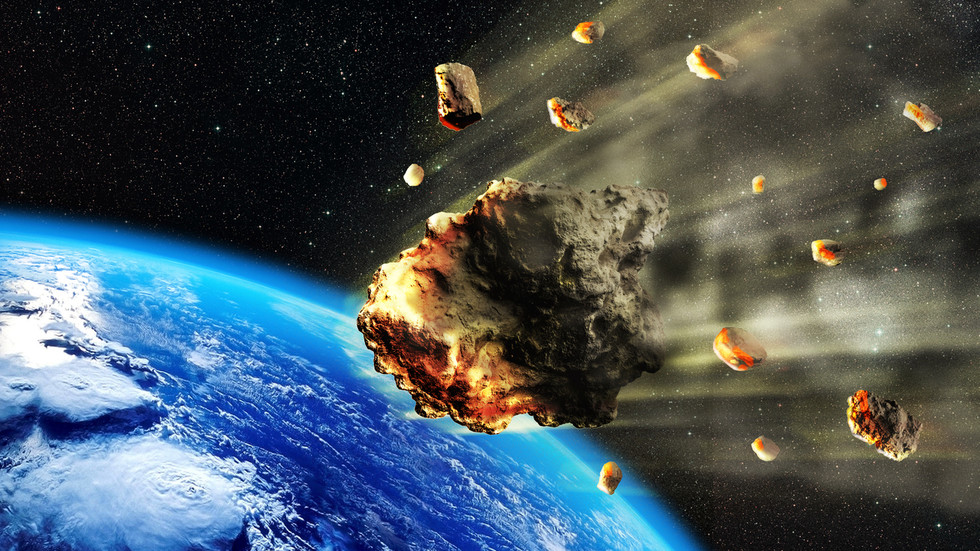
In yet another cosmic barrage of boulders and debris, NASA is warning of at least five close asteroid flybys this week, just days after Japan’s space agency announced it would be extending its asteroid-hunter mission.
To kick things off, on September 21 the 10-meter and 16-meter 2020 RQ6 and 2020 SJ2 will shoot past the Earth at distances of 1.2 and 1.4 million kilometers respectively.
Before anyone can breathe a sigh of relief, however, three more Near-Earth Objects are expected to fly past on September 22.
At 50m in diameter, or as tall as the Arc de Triomphe, the largest of the three, named 2020 RD5, will pass the Earth at 61,000 kph at a mercifully safe distance of four million kilometers.
Not long after, the paltry-by-comparison 2020 SM2, measuring just 5.8m in diameter, or four Danny DeVitos stacked on top of one another, will zoom past Earth, just 1.2 million km away.
Bringing up the rear will be the 27-meter 2020 RB6, traveling at a staggering 71,000 kph, set to pass our planet at a ‘close approach’ distance of 2.5 million km.
Also on rt.com Two asteroids set to cross Earth’s orbit just hours apart as another Great Pyramid-sized space rock barrels our wayMeanwhile, Japan's Hayabusa 2 asteroid hunter, which successfully landed on and 'shot' the asteroid Ryugu with a specialized bullet in order to obtain samples for analysis back on Earth, is set to extend its mission and touch down on another space rock.
The initial sample is due to return to Earth this December, with a planned landing in Australia.
However, the Japanese Aerospace Exploration Agency (JAXA) confirmed at a press briefing late last week that the mission would be extended and that, after a flying visit to drop off the sample, the probe would be headed for the tennis-court-sized 1998 KY26 asteroid, located between Venus and Mars.
Despite the apparent proximity to Earth, the spacecraft will spend five years cruising around the solar system before observing yet another asteroid en route to 1998 KY26, at which point mission control will decide whether a landing is feasible or not.
Think your friends would be interested? Share this story!
tinyurlis.gdclck.ruulvis.netshrtco.de
مقالات مشابه
- ساخت پروتز فک پایین با روش پرینت سهبعدی
- President Trump booed at Supreme Court as he pays respects to Ruth Bader Ginsburg
- SpaceX راه اندازی: آنچه که SpaceX و به همین دلیل است که آن را با همکاری ناسا?
- شرکت صادرات و واردات کالاهای مختلف از جمله کاشی و سرامیک و ارائه دهنده خدمات ترانزیت و بارگیری دریایی و ریلی و ترخیص کالا برای کشورهای مختلف از جمله روسیه و کشورهای حوزه cis و سایر نقاط جهان - بازرگانی علی قانعی
- 'عمل لازم با نیروی': گرتا Thunberg می گوید BLM تظاهرات & 'کرونا بحران' را طرح برای مبارزه با تغییر آب و هوا
- 'Orwellian دیکتاتوری': دولت ایتالیا برای استخدام 60,000 'مدنی دستیاران' به دله دزدی در Covid-19 قانون شکن
- قرون وسطی دارو درمان می تواند به ارائه درمان های جدید برای مدرن و روز عفونت
- سطح قند خون مرتبط با مرگ و میر مادران حتی در غیر دیابتی زنان
- اشتباه تعداد انگشتان منجر به پایین مسیر اشتباه
- 'تا زمانی که coronavirus رفتن نیست در تعطیلات':, آلمانی, وزیر کشور هشدار علیه 'بی پروا' بازگشایی مرزهای